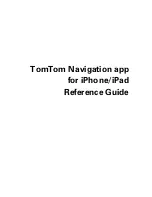
28
VirusScan
®
Command Line 5.20.0 Product Guide
Using the Command-Line Scanner
Choosing the options
3
/NOCOMP
None.
Do not check compressed executables created with the
LZEXE or PkLite file-compression programs.
This reduces scanning time when a full scan is not needed.
Otherwise, by default, the scanner checks inside
executable, or self-decompressing files by decompressing
each file in memory and checking for viruses.
/NOD
Use with
/CLEAN
.
Scan only the susceptible file types.
By default,
/CLEAN
scans and tries to clean viruses in
all
file
types. When you include the
/NOD
option, the scanning and
cleaning are limited to the susceptible file types only, as
recognized by their file extensions. See
File types scanned
by default.
on page 17
.
/NODDA
Do not use
with
/BOOT
.
Do not access disk directly. This prevents the scanner from
accessing the boot record.
You might need to use this option on some device- driven
drives.
/NODECRYPT
None.
Do not decrypt Microsoft Office compound documents that
are password-protected.
By default, macros inside password-protected compound
documents are scanned by employing “password cracking”
techniques. If, for reasons of security, you do not require
these techniques, use this option. Password cracking does
not render the file readable.
/NODOC
See note
on
page 29
.
Do not scan document files.
This includes Microsoft Office documents, OLE2,
PowerPoint, CorelDraw, WordPerfect, RTF, Visio, Autodesk
Autocad 2000, Adobe PDF 5, and Corel PhotoPaint 9 files.
/NOEXPIRE
None.
Disable the “expiration date” message if the scanner’s DAT
files are out of date.
For more details, see
Preventing Infections
on page 42
.
/NOJOKES
None.
Do not report any joke programs.
/NOMEM
None.
Do not scan memory for viruses.
Use this option only when you are certain that your
computer is virus-free.
/NOSCRIPT
None.
Do not scan files that contain HTML, JavaScript, Visual
Basic, or Script Component Type Libraries.
This type of file is normally scanned by default. Stand-alone
JavaScript and Visual Basic Script files will still be scanned.
/OCMAX=
<SIZE>
Use with
Microsoft
Windows only.
Specify the maximum size of the internal cache for file
reads.
The size must be specified in megabytes. See also
Using
memory caches
on page 19
.
/OCRS=
<VALUE>
Use with
Microsoft
Windows only.
Specify a value that represents the size of the internal cache
size for each file read.
The value may be specified as a digit that represents sizes
between 128
KB
and 2
MB
. See also
Using memory caches
on page 19
.
/PANALYZE
/PANALYSE
Use heuristic analysis to identify potential new program
viruses.
By default, the program scans only for known viruses. This
option is a subset of
/ANALYZE
. See also
Using heuristic
analysis
on page 24
.
Table 3-2 Scanning options
(continued)
Option
Limitations
Description
















































